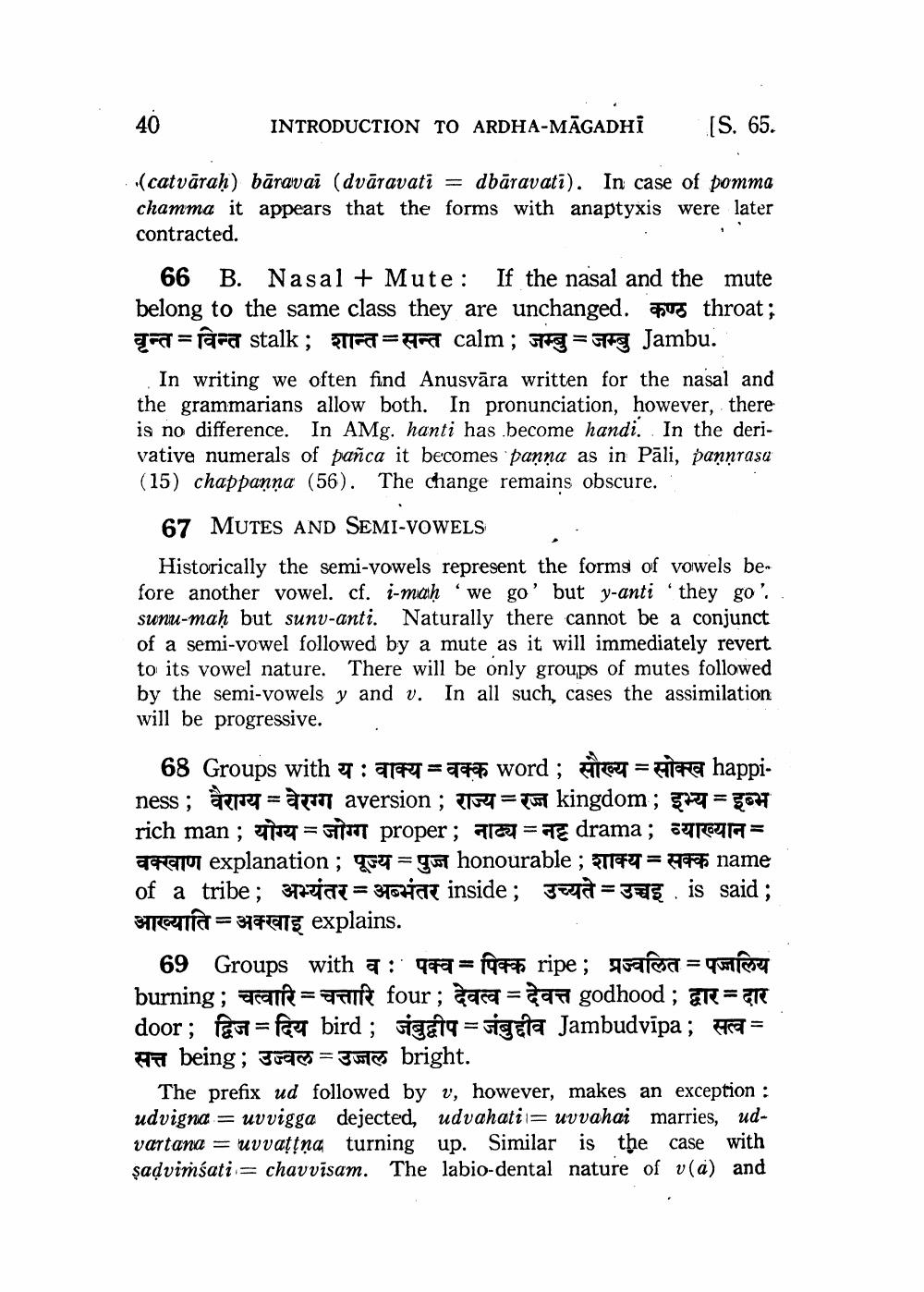________________
40
INTRODUCTION TO ARDHA-MĀGADHİ
[S. 65.
(catvārah) bāravai (dvāravati = dbāravati). In case of pomma chamma it appears that the forms with anaptyxis were later contracted.
66 B. Nasal + Mute: If the nasal and the mute belong to the same class they are unchanged. pour throat; ap=fara stalk; TFT=Fat calm ; e = Jambu.
In writing we often find Anusvāra written for the nasal and the grammarians allow both. In pronunciation, however, there is no difference. In AMg. hanti has become handi. In the derivative numerals of pañca it becomes panna as in Pāli, pannrasa (15) chappanna (56). The change remains obscure.
67 MUTES AND SEMI-VOWELS
Historically the semi-vowels represent the forms of vowels be. fore another vowel. cf. i-maḥ we go' but y-anti 'they go'. . sunu-maḥ but sunv-anti. Naturally there cannot be a conjunct of a semi-vowel followed by a mute as it will immediately revert to its vowel nature. There will be only groups of mutes followed by the semi-vowels y and v. In all such cases the assimilation will be progressive.
68 Groups with 7:277 word ; året = Fire happiness; arrazm aversion ; 787 = kingdom; 32 = ECH rich man ; oirt=sim proper; ale = E drama; core = वक्खाण explanation ; पूज्य = पुज्ज honourable ; शाक्य = सक्क name of a tribe ; 377jat = 3Tovare inside; gevat=325 is said ; area=37eis explains.
69 Groups with a : 499 = 1946 ripe ; grafsa = qolicy burning ; Self = a four; daca = 297 godhood; ar= door; ut = fat bird ; Fie&ta = gela Jambudvipa; = सत्त being; उज्वल = उज्जल bright.
The prefix ud followed by v, however, makes an exception : udvigna = uvvigga dejected, udvahatii= uvvahai marries, udvartana = uvvattna turning up. Similar is the case with sadvimśati = chavvisam. The labio-dental nature of v(a) and




